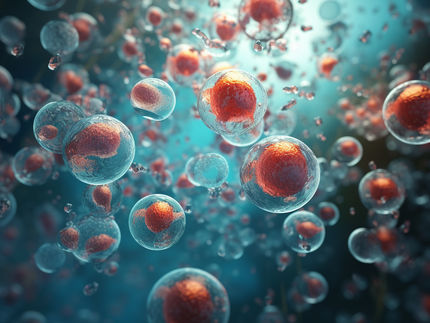Scripps Research Scientists Identify the Target of an Immune Suppression Molecule Called CD22-Itself
A New Technique for Looking at Sugar-Binding Proteins
Advertisement
Scientists at The Scripps Research Institute have applied an innovative approach to studying human proteins that bind to sugar molecules on the surface of human cells to discover how one crucial aspect of our immune system works. They identified the target of a regulatory molecule called CD22 that is expressed on the surface of the type of immune system cell known as the B lymphocyte. For years, scientists have known that B cells have a self-regulatory mechanism that involves CD22 molecules on the cell surface, like a dampening switch that keeps B cells from becoming active. But scientists did not know how the molecule does so. Part of the problem was that they did not know the target of CD22. Now that part of the mystery has been solved. According to a paper in an upcoming issue of the journal Nature chemical biology, the molecule CD22 targets itself.
B cells, once they are alerted to the presence of some pathogen in the body, will become active, proliferate, and release gobs of antibody proteins that then alert the immune system to the presence of the invaders, attract lethal "effector" immune cells to the site of infection, block viruses or bacteria from infecting host cells, and mark those bacteria or viruses for destruction by other immune system cells, such as macrophages. Active B cells can cause a lot of collateral damage to healthy tissue, and one would not want to activate B cells unnecessarily .So the body has ways of keeping the B cells inactive by setting a threshold for B cell activation. Only those B cells with receptors that can bind to the antigen with a certain affinity will become activated, undergo clonal expansion, and begin producing antibody.
The body also has built-in safety mechanisms that continually shut off the signals that lead to B cell activation. One of the molecules involved in this regulatory process is the accessory protein CD22, which is expressed on the surface of B cells. CD22 acts as a safety valve of sorts, preventing the accidental or aberrant activation of B cells. When a B-cell receptor encounters the antigen for which it is specific, the recognition of this antigen by the B cells' receptors initiates a complicated cascade of "signaling" events that leads to the B cells' activation. An early part of this signaling involves the action of enzymes known as kinases, which attach chemical groups known as phosphates onto the B-cell receptor and its associated proteins that are on the inside of the cell membrane. The degree to which these phosphates are attached determines whether the signaling cascade will continue and whether B cells will become activated or not. Since the attachment of these phosphates regulates B cell activation, their detachment downregulates B cell activation. This is where CD22 comes in.
It, like the B-cell receptor, is an integral membrane protein and has surfaces on both sides of the B cell membrane. On the inside of the membrane is a domain that recruits an enzyme known as a phosphatase. The action of the phosphatase is to remove phosphate groups from other proteins-such as the B-cell receptor complex of proteins. And CD22 will constantly recruit these phosphatases and downregulate B cell activation unless it is itself shut off. The trigger that shuts CD22 off appears to be on the outside of the membrane. There, on the outside of the cell, the CD22 molecule has a domain that recognizes a particular type of sugar called sialic acid. Once CD22 binds to its target sialic acid, it is pulled away from the B-cell receptor. Then the B-cell receptor is free to be phosphorylated.
Careful experiments in which CD22 was attached to an antibody and allowed to bind to different cellular glycoproteins in vitro yielded inconclusive results-the experiments identified not one but a number of glycoproteins to which CD22 can bind. This stymied scientists because they did not know which of all these possible targets CD22 bound to during the regulation of B cell activation.
Paulson and his colleagues decided to settle the question by looking at the target of CD22 in a natural or "in situ" setting. They designed a way to attach a common type of cross-linking agent known as a "photoaffinity label" to the sialic acid that would covalently attach to whatever protein it was close to when an ultraviolet light was shined on it. Then they fed the cells the modified form of the sialic acid so that all the glycoproteins on the outside of the cell incorporated this sugar.
This way, when they flipped on the UV light, the CD22 would become permanently attached to whatever glycoprotein to which it was in close proximity-essentially, to the protein to which it was bound. Then, by separating out the components of the cell, they would be able to tell what that molecule was. What they found was unexpected. CD22 seems to target itself. Neighboring molecules of CD22 target neighboring molecules of CD22, and when they do, they form homo-multimeric complexes.
Original publication: S. Han, B. E. Collins, P. Bengtson, J. C. Paulson; "Homo-multimeric Complexes of CD22 in B cells Revealed by Protein-Glycan Crosslinking"; Nature Chemical Biology 2005.

























































